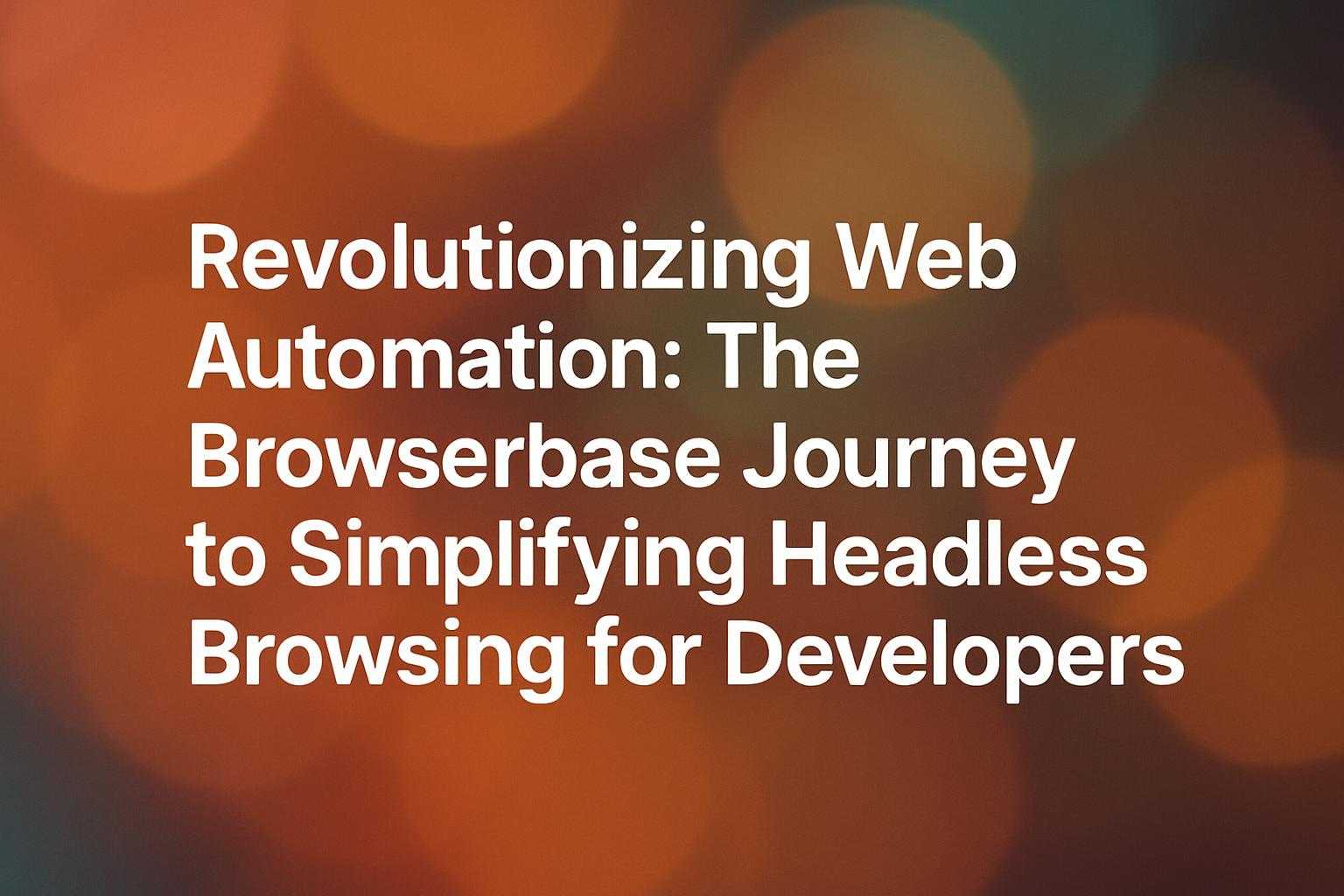Revolutionizing Web Automation: The Browserbase Journey to Simplifying Headless Browsing for Developers

Company profile
Company business details
Motivation to build the product
The founders were motivated by the challenges developers face in managing headless browser infrastructure and the need for a more efficient solution for automating web interactions. They recognized that traditional automation methods were often cumbersome and inefficient, prompting them to create a platform that leverages AI to simplify these processes.Problem that their product solves
Browserbase solves the problem of managing headless browser infrastructure for developers, who are the end users. This is important for them as it allows for reliable automation of web tasks at scale, which is essential for various applications such as web scraping, testing, and data extraction.Their unfair advantage
Browserbase's unfair advantage lies in its use of AI to generate code on the fly, simplifying the automation of complex workflows without extensive scripting, which sets it apart from traditional automation tools.Strategies
Pre-Launch (Product Development & MVP)
Identifying and Addressing Developer Pain Points
Before launching Browserbase, Paul Klein focused on understanding the frustrations developers faced with existing headless browser infrastructure. He drew from his experiences at Twilio and Stream Club, where he encountered challenges in automating web tasks. By engaging with developers who had built their own solutions, Klein identified key pain points and designed Browserbase to provide a more efficient alternative, thus ensuring the product met real market needs.
Building Relationships with Investors
Before launching Browserbase, Paul Klein focused on building relationships with potential investors. He engaged with them by sharing his thoughts on technology and infrastructure through a personal blog, where he published insights and memos about the industry. This approach allowed him to establish trust and credibility, making it easier to raise funds when he was ready to launch. For instance, he had conversations with investors like Alana Goyle and Bucky Moore long before he sought funding, which helped him secure a $2 million pre-seed round based on reputation and prior interactions.
Community Engagement through Podcasting
Paul Klein, the founder of Browserbase, utilized podcasting as a marketing strategy to engage with potential customers and investors. By participating in a podcast, he shared the story of Browserbase, its unique value proposition, and the technology behind it. This approach not only helped in building brand awareness but also positioned him as a thought leader in the developer tools space. The podcast served as a platform to connect with a wider audience, showcasing the innovative aspects of Browserbase and attracting interest from both users and investors.
Community Engagement through Open Source
Paul Klein decided to build an open-source, highly-optimized headless browser to engage the developer community. By making the product open source, he aimed to attract developers who could contribute to the project, thereby creating a sense of ownership and community around the product. This strategy not only helps in building a trusted brand but also serves as a distribution lever, as developers are more likely to try a product that they can see and modify. The open-source approach is expected to lead to word-of-mouth referrals, which are crucial in the developer tools space.
Launch Stage
Building a Robust Platform for Developers
In 2024, Browserbase launched a platform that enables developers to automate complex web workflows using AI and headless browser technology. The platform offers features such as advanced debugging tools, session recording, proxy support, and stealth mechanisms to avoid bot detection. Klein emphasized that the platform is designed not just for web scraping but for enabling AI-powered applications to interact with the web, thus addressing a significant gap in the market.
Learn more about Browserbase

Browserbase’s $27.5M Fundraising Journey in Just One Year for AI Web Automation

How to Build an AI Browser with Paul Klein, Founder + CEO of Browserbase 🅱️

Interview with Browserbase Founder Paul Klein



